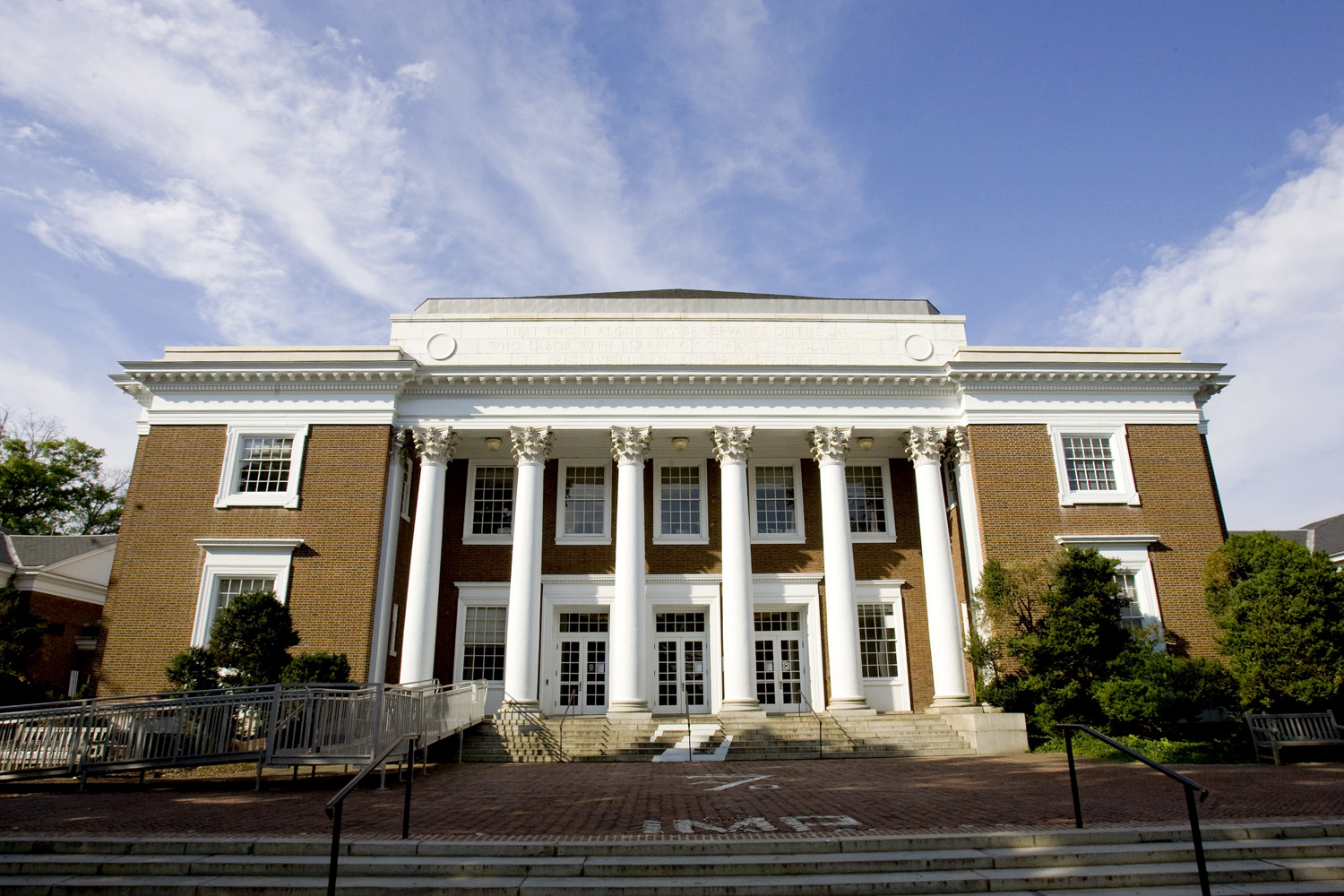July 10, 2008 -- In the early part of the 20th century,
He was right, according to Garth Anderson, manager of the
Every year, buildings are nominated for the register, said Brian E. Hogg, senior preservation planner at the University Architect's office, which nominated Clark Hall. This is the first step toward greater recognition.
"You have to reach this level before you can be put on the National Register of Historic Places,"
The University has more than 10 buildings on the Landmarks Registry, including the Rotunda, Brooks Hall, Monroe Hill and Memorial Gymnasium. Several buildings, including the Rotunda, McCormick Observatory and Faulkner House, are listed in the National Register. The Rotunda and the Lawn are also listed as a World Heritage Site.
The first law class was held in Pavilion III in 1826, the
Clark Hall was built with a $350,000 donation from William A. Clark Jr., a member of the Law School's class of 1899 and friend of then-University President Edwin A. Alderman and Law School Dean William Minor Lile. Clark, who maintained family business interests in Montana and California, built Clark Hall in honor of his first wife, Mabel, who died in 1903 shortly after giving birth to their only child, William Andrews Clark III.
Clark Hall was designed by a committee: the Architectural Commission, four architects with close ties to the University.
"They did the actual design and oversaw the construction,"
The committee consisted of chairman John Kevan Pebbles, a 1888 U.Va. graduate, class of 1888 as a civil engineer, and class of 1890 as a doctor of science in applied mathematics, and a practicing architect; Robert Edward Lee Taylor, U.Va. class of 1901, with an architecture degree from MIT in 1903; Walter Dabney Blair, U.Va. class of 1897, who received an architecture degree from the University of
Pebbles had designed Fayerweather Hall and Minor Hall,
"Each had contributed to the Grounds,"
But the design process was not smooth, in part because there were many visions of what Clark Hall would be. It had to contain academic space, a law library and a mural hall with a memorial dedication.
"And it had to have the atmosphere and the presence of a courthouse,"
Alderman dismissed an early design, saying it looked too much like a post office.
"He wanted something more monumental,"
The designers had selected a small bluff on what was then
While the outside resembled a courthouse, the interior contained an extravagant luxury — a large open hall with art. The mural room, which connected the front lobby to the law library, is considered an outstanding feature of the building. There are two three-panel murals on either side of the sky-lit hall. One painting depicts Moses presenting the Ten Commandments to the Israelites, representing the moral law. On the other side, representing the civil law, is a depiction of the trail featured in drawings on Achilles' shield in the Iliad.
Apart from the mural panels, Cox painted the dedication on the wall over the library entrance. "This building was erected by Williams Andrews Clark Jr., LLB class of 1899, in loving memory of his wife, Mabel Foster Clark, 1880-1903, and is dedicated to the faculty, alumni and students of the
"The mural room is really one of the finest interiors of any building in the commonwealth," said Hogg.
The murals took a long time and they were not ready at the time of the dedication. The designs had to be approved by the Art and Architecture Commission in
"There was a process that it had to go through," said
The building was dedicated in 1932. Alderman died in 1931 before it was completed. Lile was ill and retired before the dedication. While
There were two additions to Clark Hall while it was still the
-- By Matt Kelly
Media Contact
Article Information
July 11, 2008
/content/clark-hall-named-virginia-landmarks-registry

